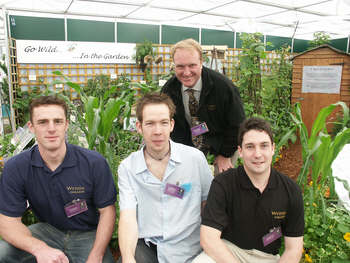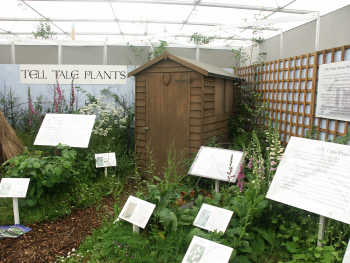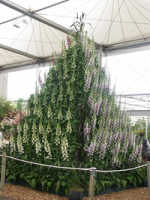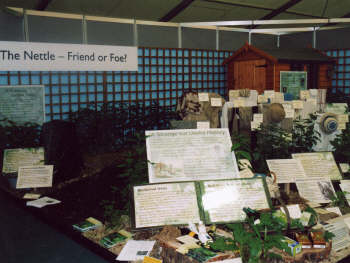

This year's display, entitled 'A Taste of the Wild,' shows how a garden can benefit wildlife whilst still looking good.
The students took the unusual step of attempting to create a garden landscape that is also edible for humans, one packed with vegetables, fruit and some more unusual edible plants. The idea is to show how wildlife gardens can be a complete package; beautiful, full of wildlife and life sustaining for all the occupants. Three main groups of wildlife feature in this display - butterflies, birds and bees. The bees will also have their own live presence, with a live hive of Bumble Bees being featured to try and help people better understand the role and importance of these threatened and harmless garden dwellers.
Students once again be working under the direction of Chelsea show 'veteran' and Writtle College lecturer Mick Lavelle.
Mick Lavelle said: “The object is not to suggest that this type of garden can sustain all human needs of course. Indeed it could be said to be a novelty by some. The serious message however is that there are a lot of native (and non native) plant species that can be used for culinary purposes. People often become somewhat one track in the garden, preferring their space to be a vegetable plot, amenity area or wildlife area. Why not combine the three in an informal way that provides enjoyment, aesthetic appeal and a sustainable habitat for much of our own threatened wildlife?”
The College also had a second floral exhibit (Bronze) in conjunction with The Sun newspaper. It consists of a seven metre pyramid of foxgloves rising from a base of carnations. The foxglove was a new variety in 2004 but the carnations are all new for 2005. In addition to Mick Lavelle, TV gardener Peter Seabrook were on hand with Sun garden writer Steve Bradley to help and encourage the students.
Download the 2005 leaflet (6.3MB)

The display, called 'Tell Tale Plants', used 20 species of plant to highlight the rich cultural heritage of plant names and stories.
The colourful exhibit comprises three sections that will look at the myth and legend behind plants including folklore, plant lore and garden lore.
The 'Plant Stories' section showed that many native British plants have a profusion of stories and folklore attached to them. Many of these are interesting or funny but almost always relate to their usefulness to humanity.
The 'What's in a Name' section looked at vernacular plant names and what they can tell us. It was primarily concerned with how plant names reveal a story, a use or details of the way that they fit into their natural environment.
The final section looked at how plants help us to make connections with the natural world. It revealed how tradition and plant lore can reveal wisdom yet to be 'discovered' by western science. Much of this wisdom is still held by civilisations in the less developed world but is in real danger of being lost as countries rapidly develop. Such knowledge can help scientists in the developing world to develop new products, generate income and add value to the environment.

Mick Lavelle, co-ordinator of the exhibit and senior lecturer in landscape management at Writtle College said: "Every plant has a story to tell and even the commonest ones deserve a second look. I want to encourage people to look at plants more closely to find out what it is that they are useful for. Each has its own purpose to serve in nature and its own unique story to tell."
The College also had a second floral exhibit (Silver) in conjunction with The Sun newspaper. It consists of a seven metre pyramid of foxgloves. The foxglove was a new variety in 2004.
Download the 2004 leaflet (8.6MB)

This year's entry for the Chelsea Flower Show was handled with extra care - their exhibit is all about stinging nettles! The teams aim was to help break down the negative reputation stinging nettles have acquired.
Visitors to the display, called Nettle Friend or Foe?, were able to view the prickly plant and find out a range of nettle facts, including the medicinal uses of the stinging nettle and how it can be used as low cost compost.
The exhibit, which coincides with Be Nice to Nettles Week (May 21-30, 2003), also included a display of materials and food made from nettles.
Mick Lavelle, senior lecturer at Writtle College and co-ordinator of the display said: “Many people think that the nettle is nasty but we hope that our exhibit will prove what a good all-round plant the nettle is and why it deserves respect.”
Download the 2003 leaflet (4.4MB)
